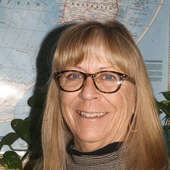- Research tips and McCook Brick Company- solid as a brick (12/16/24)
- Big Give appreciation and some railroad characters (11/15/24)
- George Randel becomes a landowner, gets married, and takes in a Buffalo Bill show (9/20/24)
- The memoirs of George F. Randel, early settler of Red Willow County (9/12/24)
- Vietnam War Memorial honors Nebraskans who served (6/13/24)
- McCook business promotions - just prior to 1893 stock market crash (5/30/24)
- Shall we dance? Meet you at the Gayway (12/8/23)
Pilgrims and Mayflower descendants
Friday, November 24, 2017
We all learned about the Mayflower, the pilgrims and the first Thanksgiving when we were growing up. Somehow the famous voyage seemed exotic and adventurous in the history books, which of course it was, along with dangerous and without a doubt more uncomfortable than most modern day people would be able to endure.
Imagine spending months in a wooden vessel which provided you with only about the area of a single bed as your space, using a bucket as a toilet, cooking meals in the same small area as you also slept, bearing a child in the midst of your fellow travelers, and sharing the limited space on the ship with goats, chickens, and yes, even dogs (a mastiff and a springer spaniel according to records).
I’m not sure why the Mayflower’s group of pilgrims became the spotlight group coming to the Americas, because Jamestown was in existence before they landed, but they did. Perhaps because they were, in truth, seeking religious freedom rather than economic gain, they are hallmarked as the example of why this country exists.
The first Thanksgiving in the new world is supposed to have been celebrated in 1621 at Plymouth but Thanksgiving ceremonies existed prior in England as a means to recognize good harvests or the end of disasters such as droughts or plagues. If you are a connoisseur of history, you need to read Mourts Relation (A Relation or Journal of the Beginning and Proceedings of the English Plantation Settled at Plimoth in New England). Edward Winston (along with passages by William Bradford) wrote this narrative of the pilgrims’ journey, settlement and hardships from their departure until the arrival of the second ship, the Fortune, and the Thanksgiving celebration that we all now share in November of 1621.
By the time that they celebrated the first Thanksgiving, the settlers had suffered the loss of over half of their original populace. Even the first wife, Dorothy (May), of the famous William Bradford perished, drowning in the waters where the ship had set anchor. Among these settlers were 18 indentured servants who had no choice in traveling to the new world, including 4 children of the More or Moore family who had been taken from their mother because they were allegedly the product of an illicit affair. Three of them died but Richard survived and his legacy lives on today.
If you are interested in finding out if you might be a descendent of the Mayflower passengers, Southwest Nebraska Genealogy Society’s library has the full set of the Silver Books, which cover the first five generations of each male aboard the Mayflower when it landed and the Plymouth Colony was formed. One of our members, Tom Corey, is quite knowledgeable on tracking Mayflower descendants. He, or one of our other members, is available every Tuesday or Thursday at our library, 110 West C, Suite M-3, from 1-3 p.m.,
Saturday, Dec. 2, will be our annual Christmas Party and Open House. We encourage anyone interested in genealogy or SW Nebraska history to stop by from 1-4 and join us for our holiday celebration.

